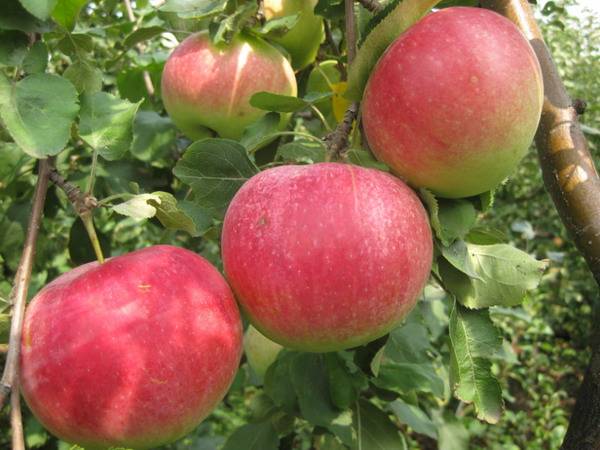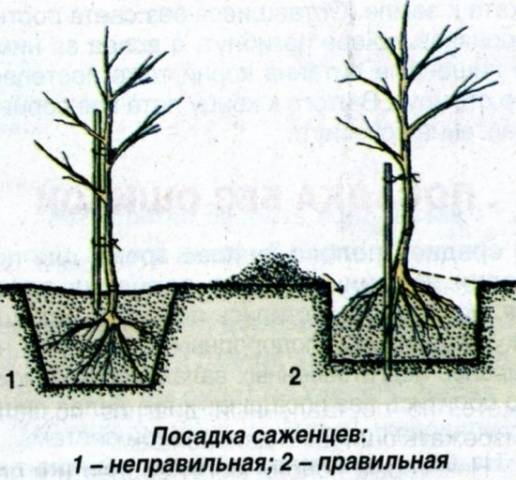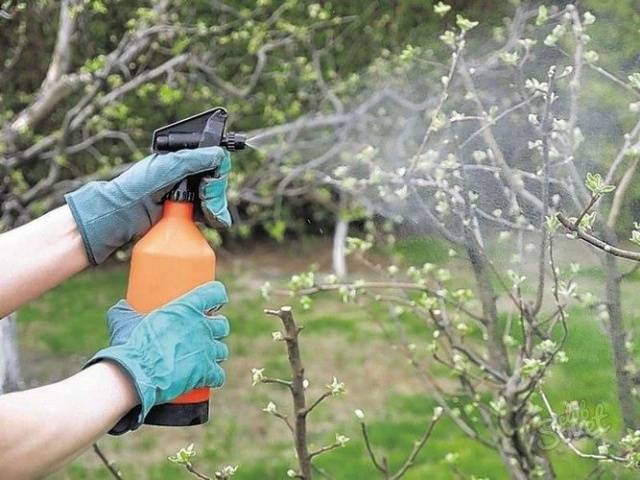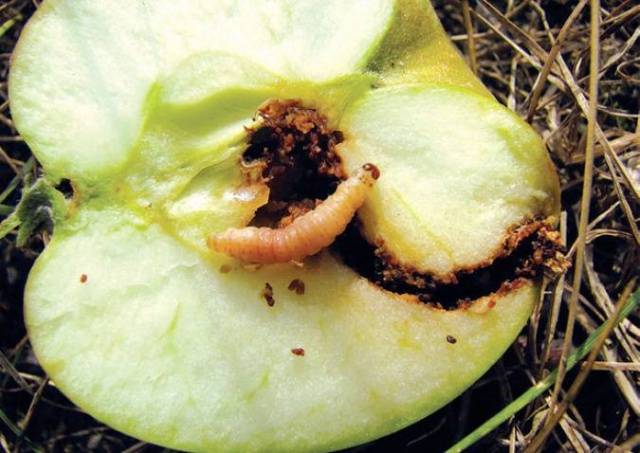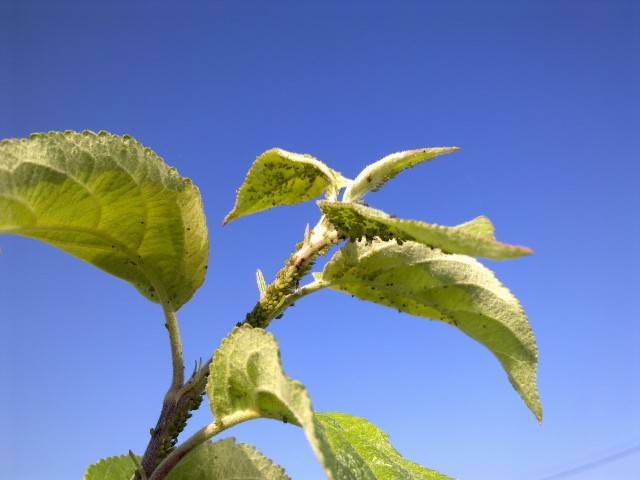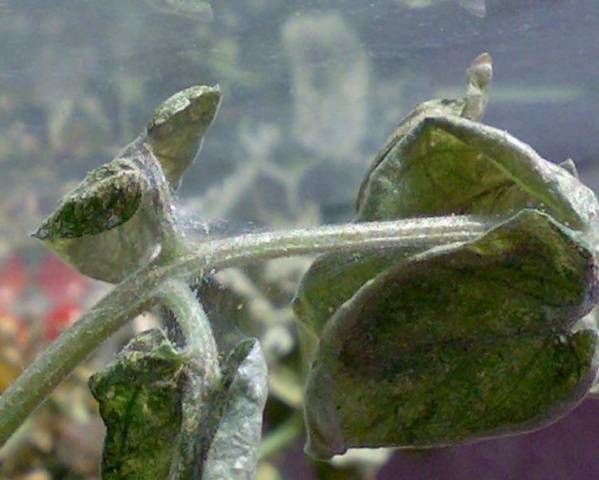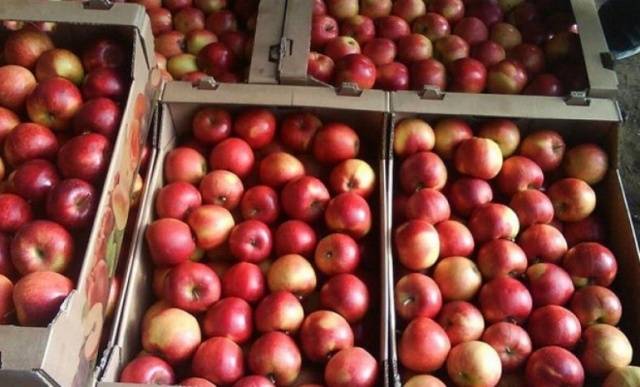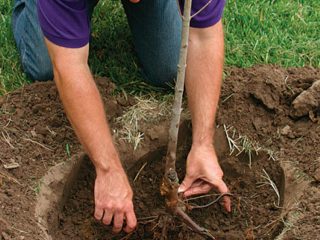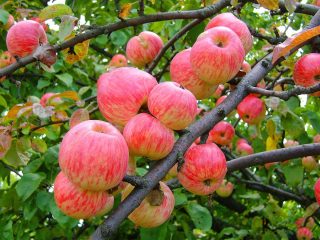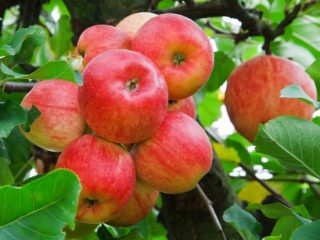Content
Early and mid-ripening apples are often tastier and juicier than late ones, but their fresh shelf life is short. So gardeners have to either process the entire crop for jams and preserves, or make a choice in favor of apple varieties with a longer ripening period. These late varieties include the Rozhdestvenskoye apple tree, whose fruits can be stored fresh until January.
Breeding history
Rozhdestvenskoe is a hybrid variety obtained in 1985 by Russian breeders as a result of crossing the VM 41497 hybrid and the Welsey variety. After State tests in the Central and Central Black Earth regions of the Russian Federation, the variety has been included in the State Register since 2001.
Description and characteristics of the variety
The Rozhdestvenskoye apple variety is triploid, that is, it has three sets of chromosomes. Compared with ordinary varieties, triploids are distinguished not only by stable annual fruiting, but also by high marketability of fruits and a high content of vitamins in them.
An important feature of such varieties is their increased resistance to the most common apple disease - scab.
Adult tree height
Rozhdestvenskoe belongs to medium-sized varieties of apple trees. In the first years after planting, seedlings grow from 0.4 to 0.7 meters, then their growth slows down. An adult tree grows up to 4 meters, like most apple trees; if the grafting is done on a dwarf stock - up to 3 meters.
Fruit
The weight and size of the fruits of the Rozhdestvensky apple trees are average. The weight of one apple is 140-180 grams; some specimens can reach even more weight. The shape of the fruit is slightly flattened, the lobes are large, weakly expressed. The shell is dense, thin, with a characteristic gloss.
The cover color of a ripe apple is red, blurred, resembling a blush on a greenish background. The pulp is firm, white with a creamy shade. Inside the fruit are closed seed chambers with small brown seeds.
Yield
Apple trees of the Rozhdestvenskoye variety are considered fast-growing and fruitful. They begin to bear fruit already in the fourth year after planting, while Antonovka ordinary (control variety) - only in the sixth. On average, 140–150 centners of this variety are harvested from one hectare of apple orchard.
Winter hardiness
According to the results of the test artificial freezing to -40 degrees, the following results were obtained.
Variety | Kidney damage, points | Damage to wood, points |
Antonovka | 1,0 | 1,5 |
Autumn striped | 1,6 | 2,7 |
Rozhdestvenskoe | 1,5 | 1,7 |
The damage received by the samples during the test is assessed as minor. Thus, the Rozhdestvenskoye variety can be classified as winter-hardy.
Disease resistance
Like any hybrid plant, the Christmas apple tree has a good immunity to diseases. Due to the Vf gene incorporated during selection, the variety is resistant to scab.
Crown width
An adult tree has a crown in the form of a pyramid (3–4 meters wide for an ordinary and 2 meters wide for a dwarf rootstock). It is formed by several main branches extending from the main trunk at an angle of 45-80 degrees.The leafiness of the Rozhdestvenskoye apple-tree is average. Leaves are green, ovoid, with characteristic serrated edges. The leaf plate is slightly pubescent, matte, the top is twisted.
Self-fertility
Rozhdestvenskoe is a self-fertile variety of apple trees. In the absence of cross-pollination, ovaries appear on a maximum of 5% of flowers.
Pollinators
The apple tree needs pollinating neighbors. The best neighborhood will be the same late varieties: Antonovka, Papirovka, Melba, etc. For guaranteed pollination, it is not necessary to plant them nearby, it will be enough if these trees grow in a neighboring area.
The frequency of fruiting
Triploids, to which the variety of Rozhdestvenskoye apple trees belongs, are distinguished by regular annual fruiting. The period of fruit ripening is significantly extended in time. The harvest begins in the first decade of September. The last apples ripen in October.
Tasting assessment
Due to the difference in climatic and soil conditions in places of growth, the chemical composition of apples can change. The table shows the data of the breeder Sedov E.N.
| Content in fruits,% | Sugar acid index | ||
Sahara | Titratable acids | pectins | ||
Rozhdestvenskoe | 10,4 | 0,48 | 14,1 | 21,7 |
Tasting score:
- The appearance of apples - 4.4 points out of 5.
- Taste - 4.3 out of 5.
Landing
Planting apple seedlings of the Rozhdestvenskoye variety in open ground is allowed both in spring and autumn. Before planting, you need to choose a place and study the possible negative factors that can affect both the plant itself and the environment.
Choosing a landing site
For planting apple trees of the Rozhdestvenskoye variety, you need to choose a well-lit place with a low level of groundwater. If they come close to the surface, you need to drain or plant a tree on a hill. Apple trees grow on loose sandy loam and loamy soils that allow air to flow well to the roots. If trees are planted on heavy clay soil, then it must be mixed with peat, compost and sand.
Pits for planting apple trees must be prepared at least a month before the planned planting of seedlings, so that the soil has time to be saturated with air. For spring planting, it is advisable to make holes in the fall, and for spring planting - no later than one and a half to two months before planting the seedlings. The depth of the pit must be at least one meter, the diameter must be at least half a meter. Several buckets of peat, humus and sod land mixed with complex fertilizer are poured inside.
For group planting of seedlings in a row, the distance between adjacent holes should be at least two to three meters. This will allow the apple trees not to clash and develop well. With a chaotic planting, the distance between the seedlings is increased to four to five meters.
Landing in the fall
In order for the apple trees to adapt to new conditions, planting must be done no later than a month before the onset of frost. If all agrotechnical measures are carried out without violations, the seedlings will winter well and, with the arrival of heat, will enter the phase of active growth much earlier than those planted in the spring.
Before planting, cuttings of apple trees need to be examined. If the roots are dry, they must be placed in water for several days, and in a solution of a root growth stimulator for a day. Rotten or too long roots must be trimmed.
Before planting, an earthen mound is made in the hole. Its height should be made in such a way that the root collar is 510 centimeters above ground level. The roots are straightened along it. At the same time, a peg is hammered into the hole, to which the apple tree will be tied. The garter will protect the seedling from damage by strong winds for the first two years.
The roots are covered with turf soil with a small mound. The soil needs to be lightly tamped, the trunk circle should be spilled abundantly with water and mulched with peat.
Spring planting
Planting seedlings of Christmas apple trees in the spring allows them to take root well and gain strength before the first winter. The preparatory measures and the work themselves during the spring planting are no different from the autumn ones.
Tree care
Immediately after planting, the trunk and the base of the branches of apple seedlings must be whitewashed. The same procedure is done in spring and autumn with mature trees. Lime, which is part of the whitening composition, protects the bark of the apple tree from sunburn and serves as protection from pests. The trunk circle must be periodically weeded, dug up or agitated for better air access to the roots. And also to preserve moisture in the soil, it is advisable to mulch it with peat or dry manure.
Watering and feeding
Regular watering is needed for Christmas apple trees only during the period of fruit setting and harvest ripening. Excess moisture is harmful, so water stagnation in the roots should be avoided. Top dressing is recommended to be applied no earlier than one year after planting. For this, complex fertilizers are used, which are applied to the tree trunk circle at the same time as digging.
Preventive spraying
Preventive treatment of Rozhdestvenskoye apple trees from pests is done 10–15 times a year.
Processing time | Why is it carried out | Substances used |
Early spring, before the buds swell | For the destruction of pests and their larvae that overwintered in the bark of a tree and in the trunk circle | Copper sulfate, DNOC |
Blooming foliage | Against moth caterpillars, aphids, ticks, weevils | Copper sulfate, Spark, Urea, Nitrofen, Decis |
The emergence of buds | Inta-Vir, Bordeaux mix | |
After the end of flowering | Benzophosphate, Chlorophos | |
Fruit set phase (1-2 times) | Against the moth | Topaz, Match, Lufox |
Fruit growth phase (2-3 times) | Against the second generation of the moth |
|
Fruit ripening phase (1-2 times) |
|
|
After the foliage has fallen | For the destruction of pests and their larvae left for the winter in the bark of a tree and in the trunk circle | Iron vitriol, Urea |
When processing apple trees, the dosage of harmful substances must not be exceeded. Activities should be carried out with the obligatory use of personal protective equipment for the skin, eyes and respiratory organs.
Pruning apple trees
Pruning allows you to both visually inspect the state of the apple tree and correctly form the crown of the tree. This procedure is done in the spring before bud break, and in the fall, after the foliage has fallen off. Old, diseased, dry branches are cut out, at the same time moss, fungi, lichen are removed from the apple tree trunk. Usually, this procedure is combined with whitewashing the trunks.
Shelter for the winter and protection from rodents
The bark of apple trees during the winter can be damaged by mice and hares, often young seedlings die after that. To prevent damage by rodents, tree trunks, in addition to whitewashing, are wrapped with roofing material, netting, or wrapped in nylon. The apple tree trunk circle is mulched with sawdust, straw or peat to a thickness of 10‒15 centimeters.
Advantages and disadvantages of the variety
The Rozhdestvenskoye apple variety has both positive and negative properties. Its advantages include:
- high productivity;
- good keeping quality of fruits;
- high portability;
- marketable condition;
- undemanding apple trees in care;
- high immunity;
- good taste of apples;
- good frost resistance of apple trees.
The disadvantages of the Rozhdestvenskoye apple trees are the extended ripening period of the fruits, as well as their tendency to shedding at the end of the fruiting period. By the end of the shelf life, fresh apples lose their flavor and become soft.
Prevention and protection against diseases and pests
Prevention is the key to a rich harvest. Preventive measures include:
- spraying apple trees from pests;
- crown pruning;
- weeding and loosening of the trunk circle;
- watering and feeding.
Apple trees of the Rozhdestvenskoye variety have good immunity to diseases. A great danger is posed by pests that destroy both the crop and the tree itself.
- Fruit moth. A butterfly whose caterpillar develops in fruit. The first generation can affect up to 20% of the crop, the second - up to 90%. Apples affected by caterpillars do not ripen and fall off. For the prevention and control of the pest, the trees are repeatedly sprayed with special agents: chlorophos, urea, Topaz, Match and others.
- Aphid. Microscopic parasitic insect that sucks sap from leaves. Leaves affected by aphids dry up and fall off. For the prevention and control of aphids, the crown of apple trees is sprayed with Nitrofen, as well as with Inta-Vir, Decis, Karate, Iskra.
- Spider mite. It actively reproduces in hot summer, having time to produce 5-6 generations during the season. It feeds on leaf juices. Affected leaves of apple trees become covered with brown spots, die off and fall off. A characteristic sign of the appearance of a tick is the presence of a thin cobweb entangling the leaves. For the prevention and control of insects, various insecticidal agents are used: Fufanon, Fitoverm, Karbofos and others. Spraying with folk remedies is also practiced: infusions of onions, garlic, horseradish.
In addition to the listed pests, the danger to the Rozhdestvenskoye apple trees is represented by scale insects, leafworms, weevils and other insects. They fight them with the same drugs, since most insecticides are complex.
Conclusion
Rozhdestvensky apples are suitable both for fresh consumption and for various preservation. They make compotes, jams, jam, apple juice. The extended ripening period and high keeping quality of the fruits allows gardeners to slowly process the entire crop with practically no loss.
The Rozhdestvenskoye apple variety has a good potential for intensive cultivation in a variety of conditions, but without good care and timely preventive measures, a high yield cannot be obtained.

